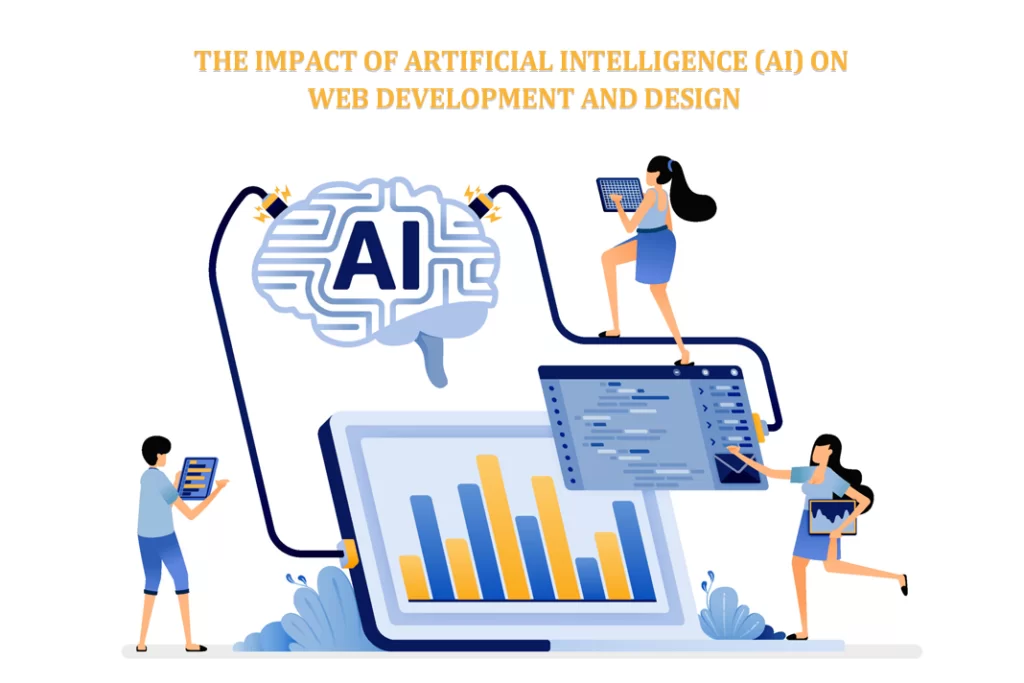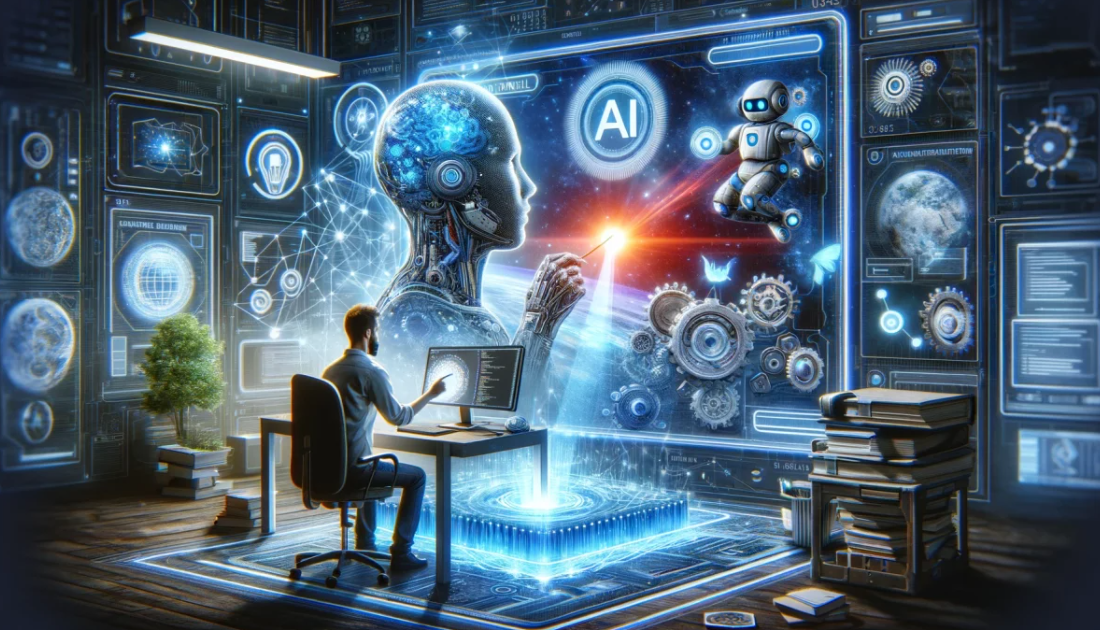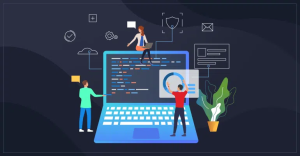AI-Powered Testing: The Future of Bug Detection and Quality Assurance

Introduction: The New Era of Intelligent Quality
AI-Powered Testing is rapidly becoming the cornerstone of modern Quality Assurance, reshaping how organizations detect bugs, optimize performance, and deliver flawless digital experiences. In an era where software systems evolve faster than manual testing can handle, AI-driven tools bring automation, intelligence, and predictive power to the QA lifecycle.
AI-Powered Testing is transforming software quality by automating bug detection, reducing testing time, and improving accuracy. Discover how AI and machine learning are revolutionizing Quality Assurance, Test Automation, and defect prevention in 2025 and beyond.
In the software industry, quality assurance (QA) is no longer a backstage process — it’s the heartbeat of digital reliability. Every flawless app, every smooth eCommerce transaction, and every frictionless user experience is the direct result of countless hours of testing, debugging, and refinement.
Yet, traditional QA practices face a harsh reality. Modern applications are complex, fast-evolving, and continuously deployed, demanding a level of testing precision and speed that manual teams and rule-based automation simply can’t sustain.
This is where Artificial Intelligence (AI) enters — not as a futuristic concept, but as a practical revolution already reshaping bug detection, test automation, and quality assurance across industries.
AI-powered testing introduces self-learning systems capable of predicting, detecting, and even preventing software defects before they reach production. It’s not just about automating test scripts; it’s about building intelligence into the testing lifecycle itself.
In this article, we’ll explore how AI is transforming QA — from traditional testing bottlenecks to predictive quality models — and why AI-driven assurance is fast becoming the defining standard for next-generation software excellence.
1. The Evolution of Software Testing: From Manual to Machine Intelligence
Software testing has come a long way. Once entirely manual — dependent on human testers meticulously executing test cases — it evolved into automated testing, powered by frameworks like Selenium, JUnit, and Cypress.
But automation alone is no longer enough. Conventional test scripts depend on static data and fixed rules, breaking whenever code changes or new modules are introduced. As a result, QA teams spend more time maintaining test scripts than creating value.
Enter AI-powered testing, the third evolutionary stage, where systems:
- Learn from data patterns, not predefined scripts.
- Adapt automatically to code changes.
- Predict failures before execution.
This shift marks the dawn of the Cognitive QA Era — where machines not only automate but think about testing.
2. What Is AI-Powered Testing?
AI-powered testing uses machine learning (ML), natural language processing (NLP), and deep learning to analyze vast amounts of code, test cases, and production data to intelligently identify bugs, optimize test coverage, and enhance performance validation.
Unlike traditional automation, which follows “if-then” logic, AI testing platforms continuously learn from historical test runs, code commits, and user behavior, enabling smarter, faster, and more reliable QA.
Core Capabilities of AI in Testing
- Self-Healing Tests: Automatically update test scripts when the UI or code changes, eliminating false failures.
- Anomaly Detection: Identify unusual system behavior that indicates a bug, even if it wasn’t predefined.
- Predictive Defect Analytics: Forecast which areas of code are most likely to fail.
- Automated Test Generation: Use AI models to create new test cases from requirements or user stories.
- Visual Validation: Detects subtle UI defects (alignment, color, rendering issues) that traditional automation misses.
- Continuous Learning: Improve accuracy after each test run using feedback loops.
Essentially, AI testing transforms quality assurance from reactive to proactive, turning every release into a data-informed decision.
3. The Core Technologies Behind AI Testing

AI-driven QA isn’t powered by a single algorithm — it’s an ecosystem of data science disciplines woven into the testing process.
a. Machine Learning (ML)
ML models analyze historical defect data, user flows, and test results to predict which modules need attention. Over time, they identify repetitive failure patterns, enabling targeted regression testing and intelligent prioritization.
b. Natural Language Processing (NLP)
NLP enables test case generation directly from plain English requirements or user stories. Testers can write, “Verify that the login page accepts valid credentials,” and AI tools automatically build the corresponding test scripts.
c. Computer Vision
For front-end testing, computer vision helps identify visual regressions in the UI. It compares screenshots pixel by pixel and detects invisible UI drifts caused by CSS or responsive design changes.
d. Predictive Analytics
By learning from historical defects, predictive models identify which code sections are at high risk of failure — allowing developers to strengthen weak spots before testing even begins.
These technologies combine to create self-aware testing systems — capable of monitoring, learning, and evolving with every deployment.
4. Benefits of AI-Powered Testing for Modern Enterprises

Adopting AI in testing isn’t just a trend; it’s a strategic investment that directly impacts software reliability, release velocity, and customer satisfaction.
1. Faster Test Execution
AI-driven automation tools can execute thousands of test cases in minutes. Through intelligent prioritization, they run only the most relevant tests, dramatically reducing testing cycles.
2. Higher Accuracy and Fewer False Positives
Unlike traditional test scripts that break when minor UI changes occur, AI-driven “self-healing” tests adapt automatically. This minimizes false failures and boosts testing reliability.
3. Predictive Defect Prevention
Instead of reacting to bugs, AI identifies patterns that lead to them. This allows teams to fix potential issues before they escalate — reducing critical post-release defects.
4. Smarter Test Coverage
AI scans requirements, code commits, and historical test data to determine coverage gaps, ensuring that high-risk areas receive maximum attention.
5. Reduced Maintenance Effort
With dynamic test generation and self-updating scripts, QA teams spend less time rewriting tests and more time on strategic validation.
6. Enhanced Developer-Tester Collaboration
AI tools integrate seamlessly into CI/CD pipelines, providing developers with real-time insights, automated feedback, and actionable analytics.
7. Cost Efficiency
By optimizing time, resources, and rework, AI-powered testing can cut overall QA costs by 30–50%, especially in large-scale enterprise systems.
5. How AI Detects Bugs Before Humans Do
AI doesn’t just automate testing — it thinks ahead. Using historical project data, it learns which files, commits, or features have historically produced errors.
Here’s how AI identifies defects early:
- Data Collection: The AI model analyzes logs, historical bug reports, and user behavior data.
- Pattern Recognition: It identifies recurring bug triggers (e.g., specific UI components or integration points).
- Anomaly Prediction: When new code resembles those patterns, AI flags it as “likely risky.”
- Smart Alerting: The system recommends testing focus areas, saving QA engineers time and effort.
The result is predictive bug detection — catching defects before they surface in production, enhancing system resilience.
6. Real-World Applications of AI-Powered QA
a. Continuous Testing in CI/CD Pipelines
AI tools like Testim, Applitools, and Mabl integrate directly with CI/CD systems (e.g., Jenkins, GitHub Actions). They run intelligent tests at every commit, reducing deployment risks.
b. Automated Regression Testing
AI identifies which parts of an app changed in a release and runs regression tests only where needed, improving speed without sacrificing quality.
c. Visual Testing
Tools like Percy and Applitools Eyes leverage computer vision to validate UI consistency across devices and browsers.
d. Autonomous Test Case Generation
AI systems such as Functionize can generate new test cases automatically based on user session data, reducing manual effort and improving coverage.
e. Performance and Load Testing
Machine learning models simulate real-world traffic patterns, predicting performance degradation under peak loads and suggesting resource optimization.
These applications showcase how AI can elevate QA from procedural to predictive, bridging the gap between development speed and quality assurance.
7. The Human Element: AI + QA Engineers = Intelligent Synergy
Despite AI’s capabilities, human testers remain indispensable. AI handles the repetitive, data-driven aspects of testing, but human intuition, domain knowledge, and creative problem-solving remain beyond automation.
The most successful QA models combine:
- AI for automation, prediction, and analytics
- Human expertise for interpretation, validation, and user empathy
This synergy creates a cognitive QA ecosystem, where AI handles the scale, and humans provide judgment — ensuring intelligent and ethical testing decisions.
8. Challenges in Adopting AI Testing
While the potential is immense, the path to AI-driven QA isn’t without obstacles.
a. Data Dependency
AI models require extensive, high-quality test data to learn effectively. Incomplete or biased data can limit prediction accuracy.
b. Implementation Complexity
Integrating AI tools into legacy systems or diverse tech stacks can be challenging for large enterprises.
c. Skill Gaps
QA professionals need training in AI fundamentals, ML modeling, and data analytics to fully leverage intelligent testing tools.
d. Cost of Initial Setup
AI-based testing solutions often require higher upfront investments — though they yield exponential returns long-term.
Addressing these challenges requires strategic planning, training, and cultural adaptation toward AI-augmented development.
9. The Future of QA: Self-Evolving Testing Ecosystems
In the next decade, we’ll witness the rise of autonomous testing environments — systems that:
- Continuously monitor user behavior in production.
- Auto-generate new tests based on feature rollouts.
- Self-optimize test strategies using reinforcement learning.
- Deliver zero-defect releases through closed-loop learning cycles.
Imagine a world where:
- Your web app deploys updates autonomously.
- AI validates user flows in real time.
- Test results are automatically correlated to business KPIs.
This isn’t science fiction — it’s the logical evolution of AI in DevOps. The line between testing, monitoring, and analytics will blur, forming a continuous feedback ecosystem that ensures digital perfection at scale.
10. Choosing the Right AI-Powered Testing Solution
When selecting an AI-based QA tool for enterprise adoption, consider:
- Integration Compatibility – Works seamlessly with your CI/CD stack.
- Self-Healing Capabilities – Can autonomously fix broken test scripts.
- Visual Validation Support – Uses AI for UI consistency.
- Predictive Analytics Dashboard – Offers actionable insights and metrics.
- Scalability & Cloud Support – Handles large test suites efficiently.
Leading Tools in 2025:
- Testim.io – Self-healing test automation.
- Mabl – AI-driven end-to-end testing.
- Applitools Eyes – Visual AI for interface validation.
- Functionize – Natural language testing powered by NLP.
- TestSigma – No-code AI testing for enterprise teams.
The ideal solution depends on your organization’s development speed, infrastructure, and automation maturity.
Conclusion: The Intelligent Path to Perfection
AI-powered testing represents more than just a technical evolution — it’s a strategic shift in how quality is defined, delivered, and sustained.
In the digital economy, where user expectations are unforgiving and release cycles are relentless, the future belongs to teams that can test smarter, faster, and continuously.
By integrating AI into your QA workflow, you move from reactive debugging to predictive quality assurance, where issues are foreseen and prevented — not discovered after deployment.
AI doesn’t replace human testers; it empowers them — amplifying creativity, accelerating speed, and ensuring excellence at scale.
For software enterprises, the message is clear:
The path to digital trust and innovation runs through AI-driven quality assurance — where intelligent systems guard every line of code, and perfection becomes not a possibility, but a predictable outcome.
Summary Table
| Aspect | Traditional QA | AI-Powered QA |
| Test Creation | Manual scripting | Auto-generated via NLP |
| Maintenance | High (frequent breaks) | Self-healing automation |
| Defect Detection | Reactive | Predictive and preventive |
| Coverage | Limited | Adaptive and data-driven |
| Speed | Slow | Near real-time execution |
| Accuracy | Human error-prone | Machine-optimized |
| ROI | Gradual | Exponential after adoption |
Final Insight
As AI continues to evolve, so will the definition of software quality. The organizations that embrace intelligent automation today will lead the digital ecosystem of tomorrow — where quality is not tested into software, but built and learned into it.


